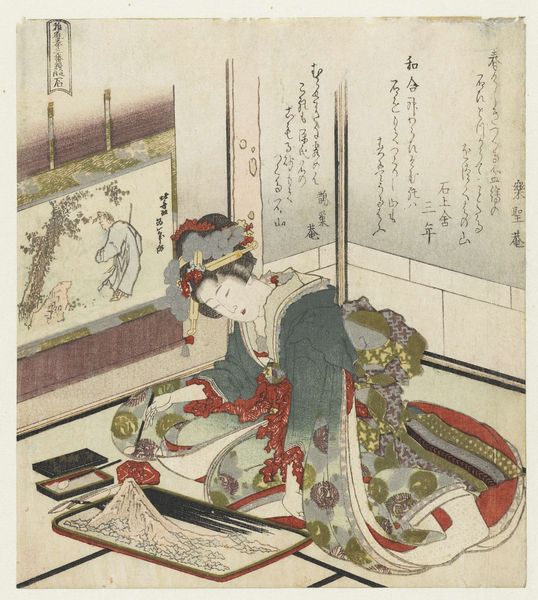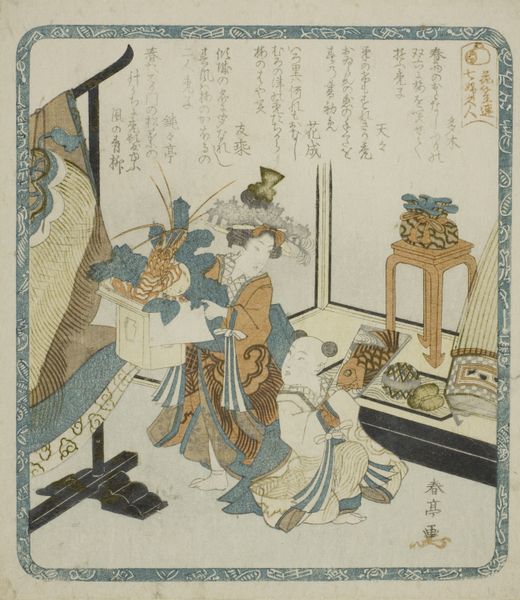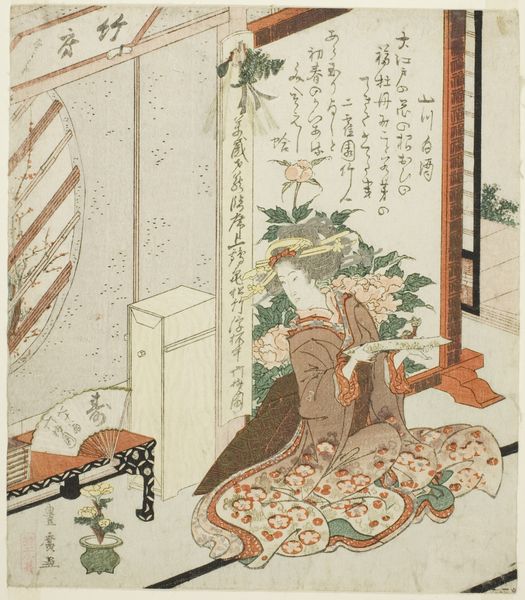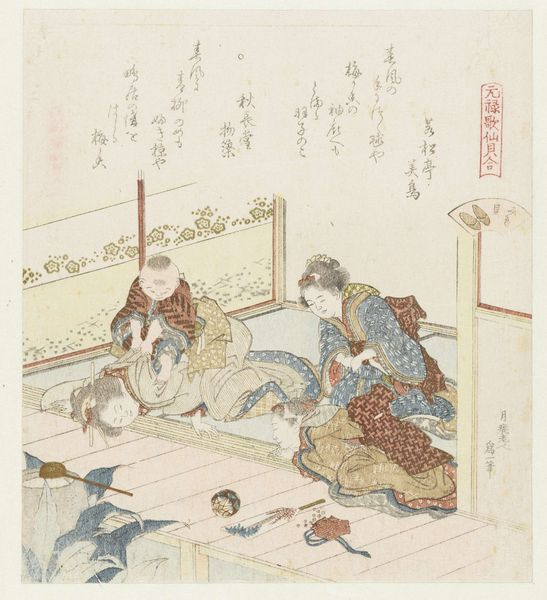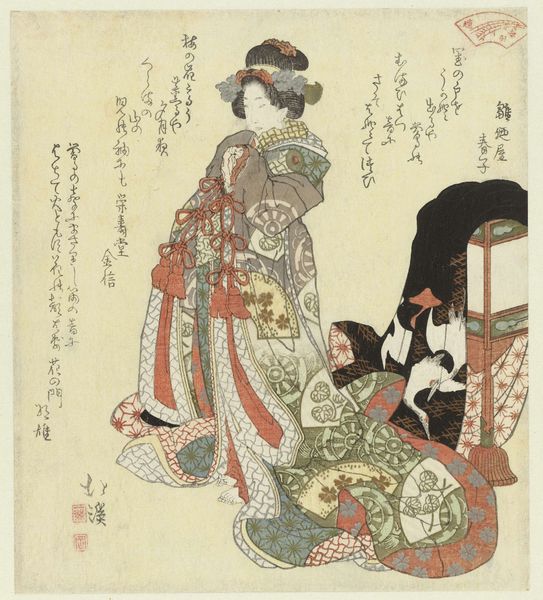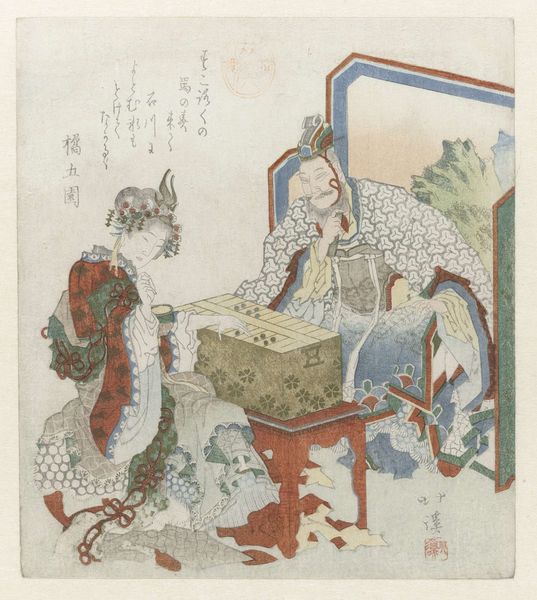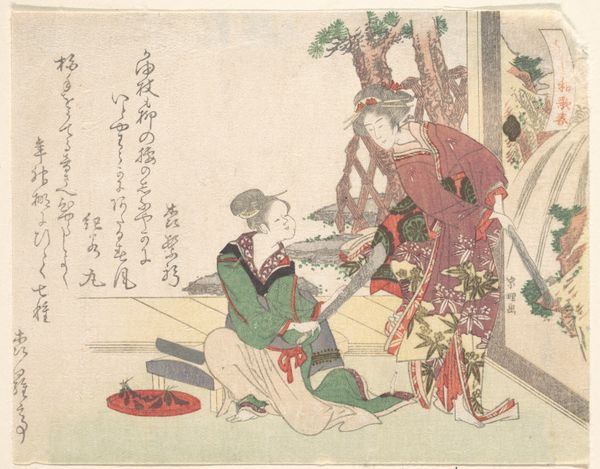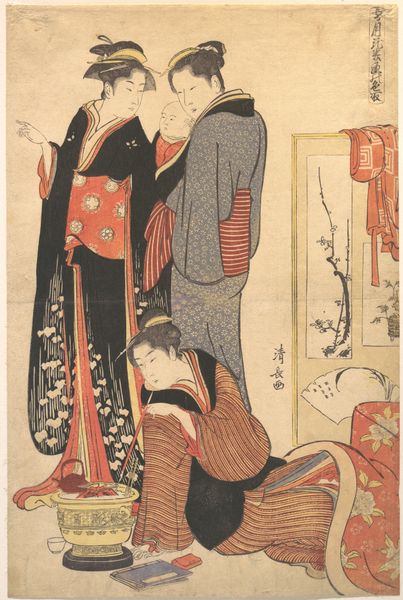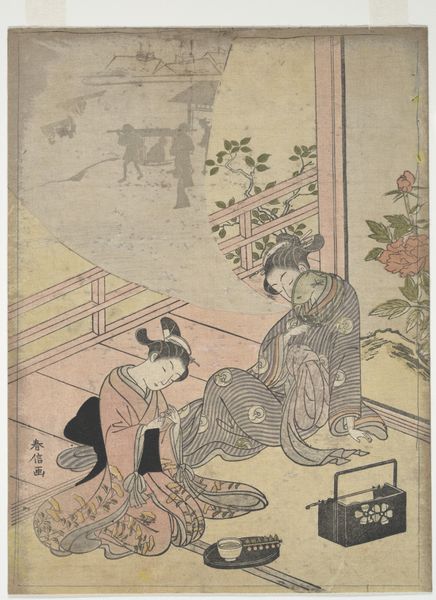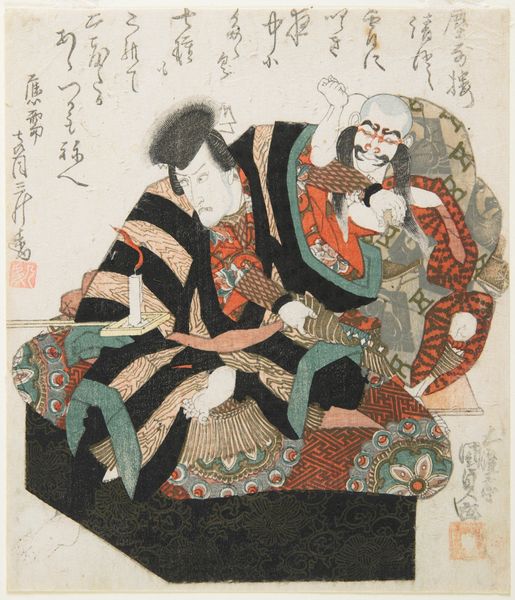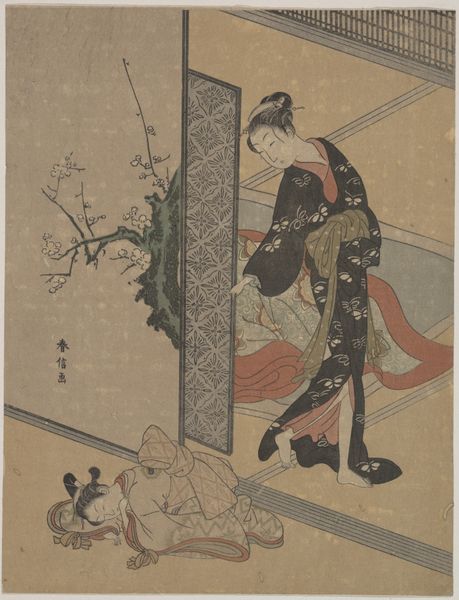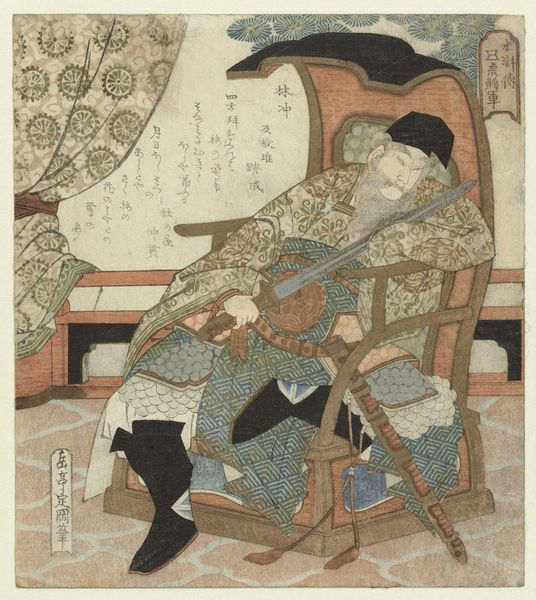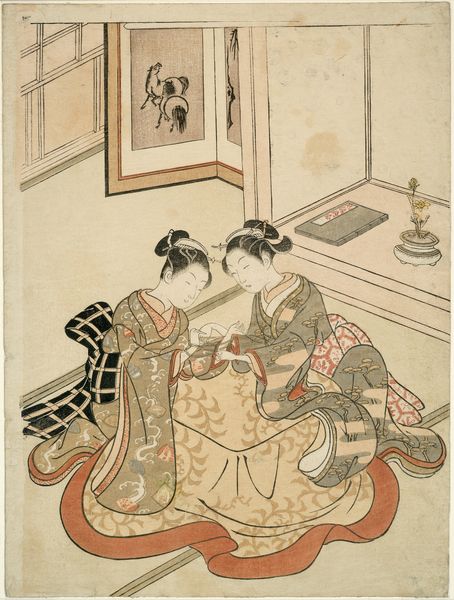
print, ink, woodblock-print
#
portrait
#
water colours
# print
#
ukiyo-e
#
figuration
#
ink
#
coloured pencil
#
woodblock-print
#
genre-painting
Dimensions: 8 3/16 x 7 in. (20.8 x 17.8 cm) (image, sheet)
Copyright: Public Domain
Curator: This print, "Yellow of Boxwood Comb," created around 1820 by Ryūryūkyo Shinsai, provides an intimate glimpse into the lives of women during the late Edo period. Shinsai employed woodblock printing with ink and color to portray this everyday scene. Editor: Immediately, I'm drawn to the soft, almost muted palette and the quiet sense of intimacy. The figures are gracefully arranged, but there’s also a subtle tension – I can almost hear whispers. Curator: That's astute. Genre scenes like this were very popular; prints offered the merchant classes affordable art, depicting not only the courtesans and actors but also quieter domestic moments like this one. We see two women, seemingly engaged in arranging personal items. Editor: I’m intrigued by the details – the elaborate patterns on their kimonos, the calligraphy in the top-left, and especially the comb box, which seems to be the focal point. Does the inscription or the comb itself hold symbolic significance? Curator: Absolutely. While the inscription contains text which alludes to literary references appreciated at the time, the titular comb box points to personal care but can also infer certain roles available to women. Personal adornment in this period reflected not just aesthetics, but also one's status within a rigid social hierarchy. Editor: This resonates. Considering the restrictive social norms, did representing these moments of domesticity serve to reinforce or subvert conventional gender roles? Were these images meant for male or female consumption, or both? Curator: A complex question. Ukiyo-e prints catered largely to an urban, middle-class male audience and many of these genre scenes were to romanticize or sexualize female sitters; in contrast this work possesses less bravado or exaggeration compared to contemporary artwork during this period. Shinsai’s work captures the beauty of domestic activity of the Edo period while revealing subtle implications and connections to modern socio-political considerations of our society today. Editor: That nuanced historical context is really critical for contemporary viewers, and that final question helps me appreciate just how richly this delicate artwork speaks to issues of identity and representation that are, even now, very relevant.
Comments
No comments
Be the first to comment and join the conversation on the ultimate creative platform.
